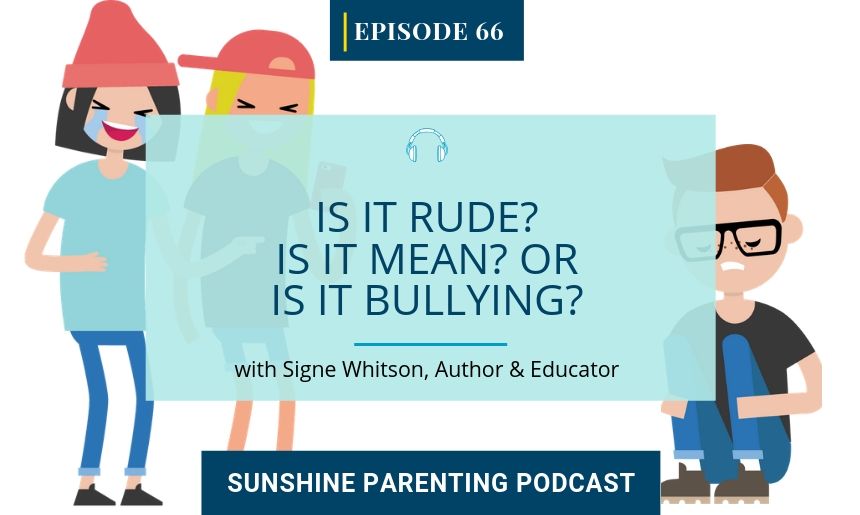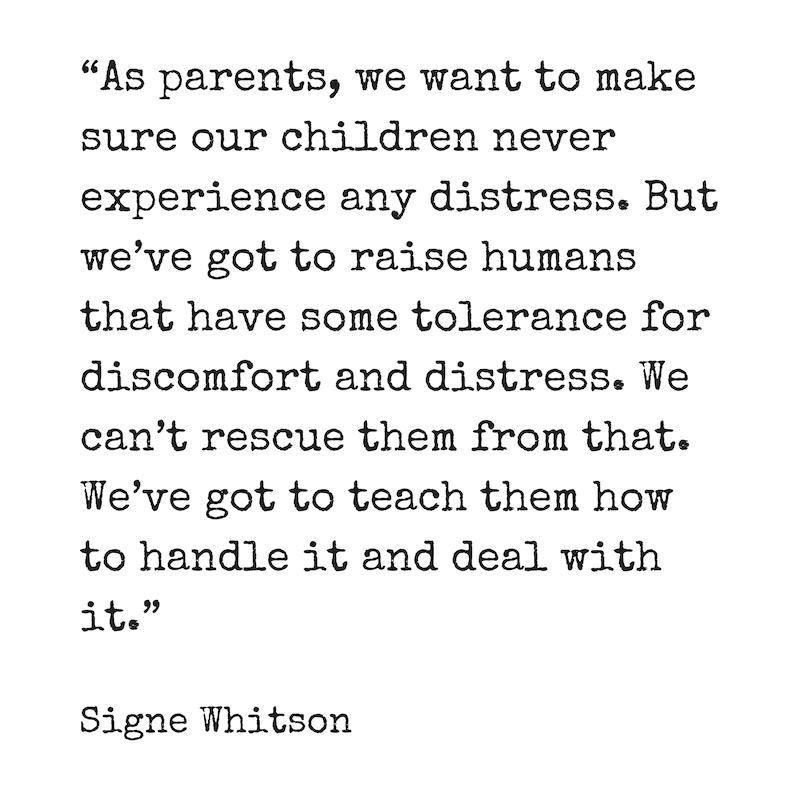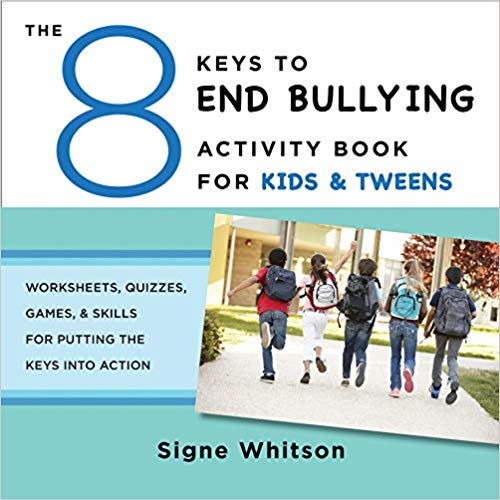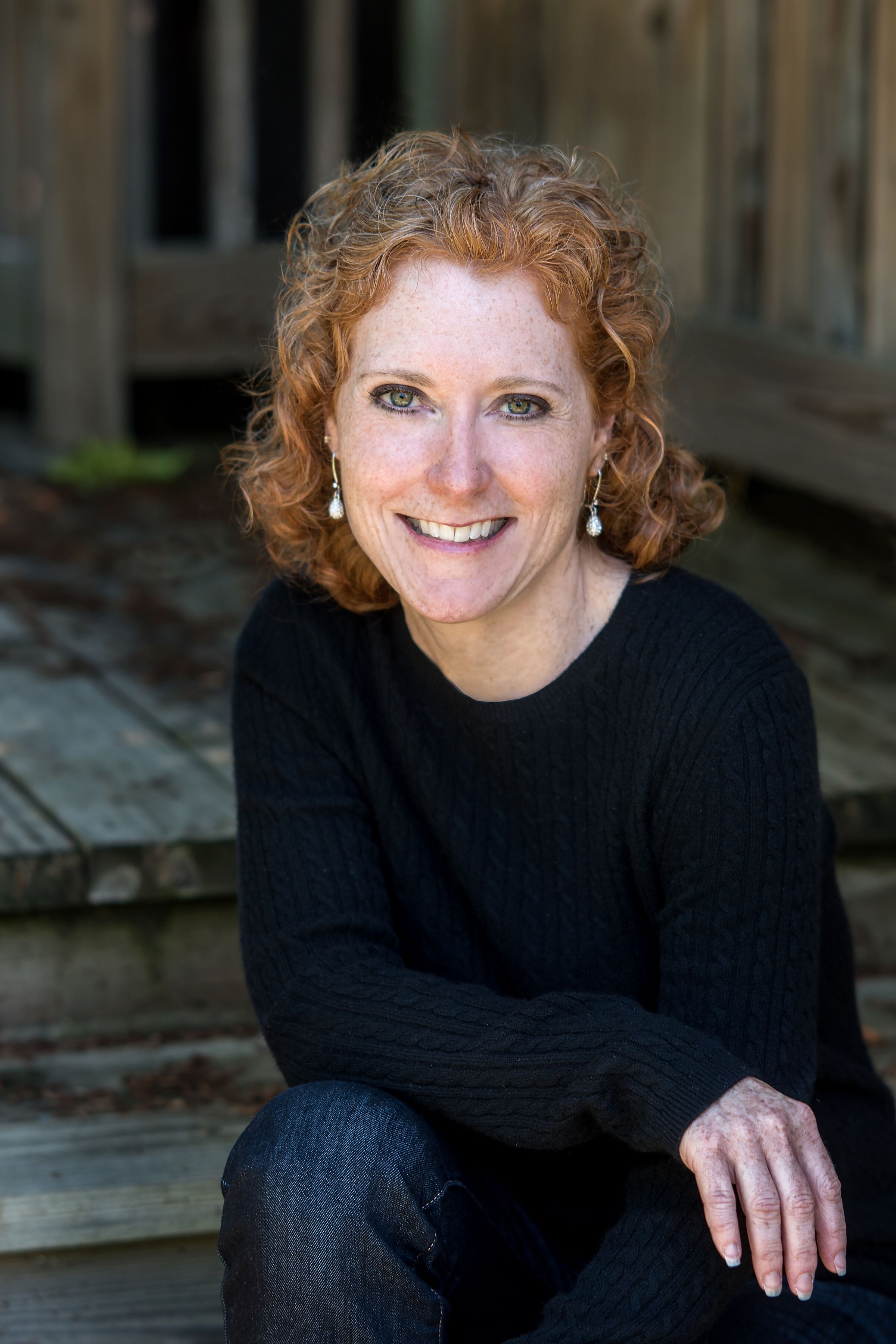
It is really important to shine the light on actual bullying behavior when it is toxic, relentless and cruel. But if we mistake things that are rude, joking or even mean and over-label them as bullying, then we are going to stop paying attention to bullying just as fast as it came into the spotlight. That’s a real disservice to the kids that are feeling the real toxic stress of what is actually ‘bullying’.
Signe Whitson
In Episode 66, I’m talking with Signe Whitson. I first learned of Signe when reading her article in Psychology Today entitled, Is it Rude, Is it Mean, Is it Bullying? Her article resonated, because I, too, have experienced both kids and parents using the term “bullying” for social situations that don’t meet the criteria for bullying. I found Signe’s insights, experience, and advice incredibly helpful, and I hope you do, too!
ABOUT SIGNE
 Signe Whitson is a certified school social worker, author, and internationally-recognized speaker with 20 years of experience working with children, teens, and families. She presents customized training workshops for professionals, parents, and students on topics related to understanding and ending bullying, managing anger in children, changing passive aggressive behavior, and intervening effectively in crisis situations in schools and treatment organizations.
Signe Whitson is a certified school social worker, author, and internationally-recognized speaker with 20 years of experience working with children, teens, and families. She presents customized training workshops for professionals, parents, and students on topics related to understanding and ending bullying, managing anger in children, changing passive aggressive behavior, and intervening effectively in crisis situations in schools and treatment organizations.
BIG IDEAS
1. Not all bad behavior is bullying. What is the difference between behavior that is rude, mean or bullying?
- Rude = Inadvertently saying or doing something that hurts someone else.
- Mean = Purposefully saying or doing something to hurt someone once (or maybe twice.) It typically occurs after a disagreement between friends or teammates.
- Bullying = Involves the 3 Ps: Purpose (intentionally aggressive behavior), Pattern (repeated over time) and Power (an imbalance of power, particularly social power).
2. Flip the conversation. When kids report bullying behavior, instead of treating them as victims, empower them to view the situation with compassion. Instill empathy by discussing what could be going on with the other person. Help your child recognize that sometimes kids lash out when they are struggling within themselves.
3. Empathy and kindness are the antidotes to bullying. Focus on promoting positive behaviors, such as giving compliments and celebrating each others’ victories.
4. Young people are going to have to learn to deal with rude or mean people throughout their lives. We can teach them the skills they need to know what they’re dealing with and learn how to stand up for themselves.
5. When kids report bullying behavior:
- “Don’t just do something, stand there.” Rosalind Wiseman, author of Queen Bees and Wannabes. Don’t freak out. When parents overreact, it exacerbates their child’s stress level. Be silent and listen. Resist the urge to rush in and fix the situation.
- Say, “I am so sorry that happened to you” or “That is really hurtful when people say things like that.” Show sympathy.
- Always thank the child for reporting bullying behavior. It takes a lot of courage. Typically, by the time the situation is reported, the child has already tried to resolve the conflict the easy way (ignoring and walking away) and they are under a lot of stress.
- Brainstorm with your child and help them to come up with ways to resolve the conflict. Ask, “What have you tried?” “How do you think you can handle this?” Give your child ownership and help them to develop the skills to solve problems.
6. “Bully” is a verb, not a noun. It is something a child makes a choice to do but it doesn’t mean that’s who they are. All kids can act like bullies at times. They should not be labeled or socially alienated.
QUOTES
Signe: “As adults, we need to know how to distinguish between rude/mean behavior and bullying so that we know how to intervene properly.”
Signe: “The way we are going to change the culture of bullying in schools is by creating empathy and way too much regard and thought for other people to permit a young person to ever get in a pattern of bullying another person in the first place.”

Audrey: “When kids are so used to their parents getting over-excited when things are going poorly (because it feels good to jump in and rescue them), it becomes their way of getting their parents’ attention. They are more likely to report something that went wrong rather than sharing something positive.”
Signe: “Biology plays a role in an unhelpful way. Our brains are wired to focus on negative experiences instead of positive ones. So when you ask your child how their day went, they will focus on the thing that went wrong that day. Meanwhile, our parent-brains are wired to be on alert and our protective instincts kick in. Kids will focus on the negative and parents will overreact.”
Audrey: “We need to help our kids learn to extend grace to others. We all make mistakes. None of us want to be judged or labeled by our worst mistake.”
LINKS
Signe’s original post, Is it Rude, Is it Mean, or is it Bullying?
Books by Signe Whitson:
The 8 Keys to End Bullying ACTIVITY BOOK for Kids & Tweens (and companion guide)
8 Keys to End Bullying: Strategies for Parents & Schools
Friendship & Other Weapons: Group Activities to Help Young Girls Ages 5-11 to Cope with Bullying
How to Be Angry: An Assertive Anger Expression Group Guide for Kids and Teens
If you’d like more information:

- Email Signe at Signe@SigneWhitson.com,
- Follow Signe on Twitter @SigneWhitson,
- Watch clips of her training on YouTube,
- “Like” Signe Whitson on Facebook.
RELATED POSTS/PODCASTS
If you liked this episode, you might want to listen to Episode 41, where I interview Christine Carter about getting comfortable with our kids’ discomfort.
Read my posts:
How to Respond to Bad Behavior.
3 Simple Techniques to Help Kids Make Friends
5 Steps to Help Kids Resolve Conflicts
